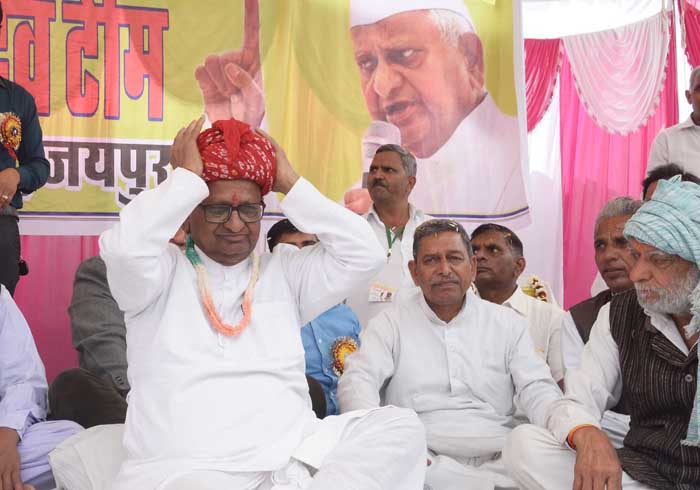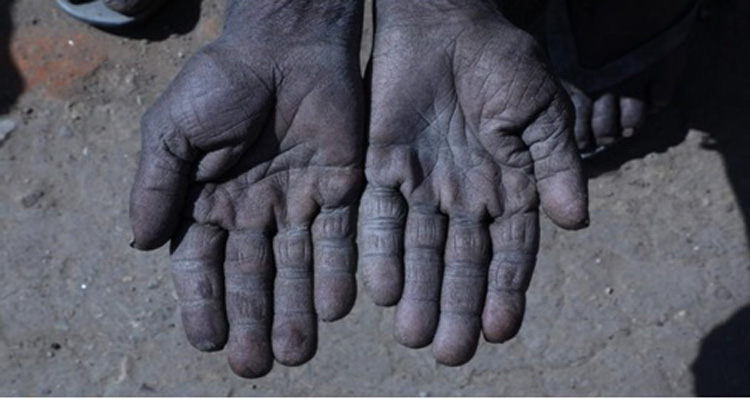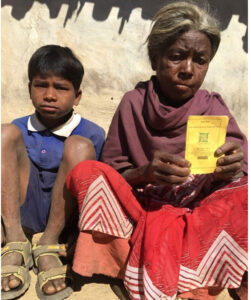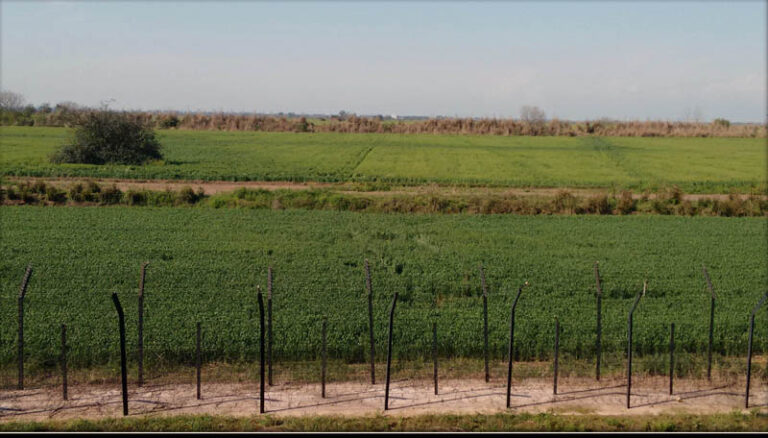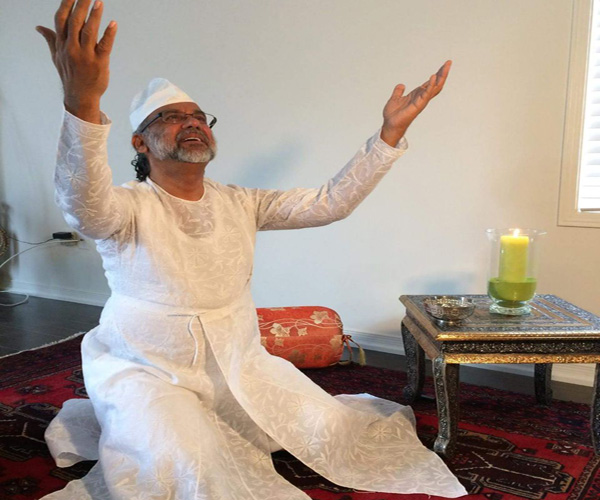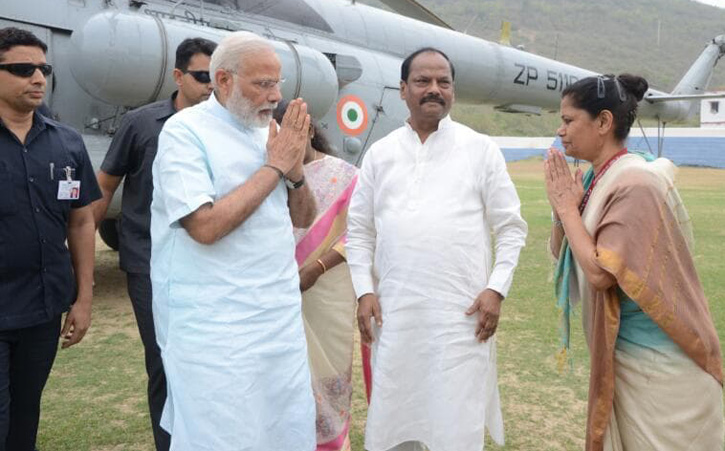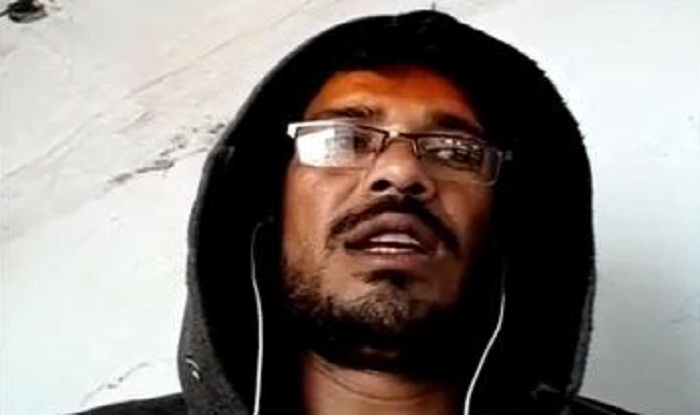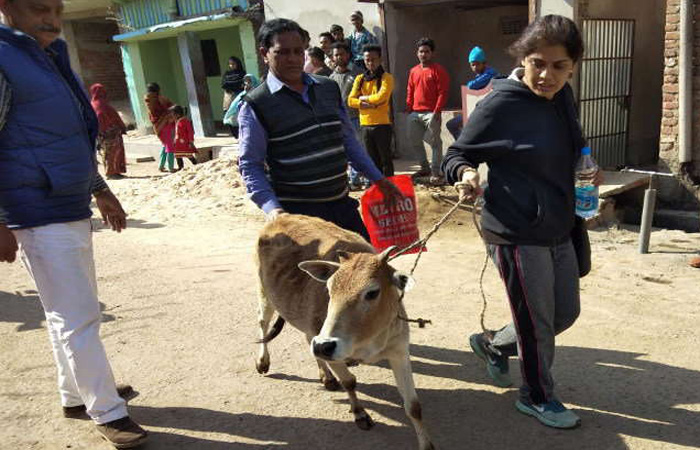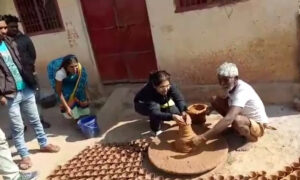A crow flew off from the flag atop a pole at the security post in Pakistan’s side of Punjab and, covering a few yards in the sky, came to sit on the Indian flag at Dera Baba Nanak —a village on Indian side of Punjab. Standing just near the Radcliffe line, I watched the crow with envy—Alas, I was not as lucky as the feathered denizen to crisscross the borders at will.
I was among the visitors who had gone at the India-Pakistan borders to see Pakistan, its farm-fields full with green wheat crops, farmers and the Gurudwara at Kartarpur in Punjab side of Pakistan. Guru Nanak had settled and mingled with the Almighty near the village Pakhoke, opposite to Kartarpur — a town which lies over the border in Pakistan. From Dera Baba Nanak, we could easily see across the border into Pakistan and Gurudwara across the river Ravi at Kartarpur.
Four farmers were driving tractor to spray some insecticide in their wheat filled farm on Pakistan side. The sprawling farm ended at the no man’s land, just 10 yards away from the pedestal we had stood on, at Dera Baba Nanak on the Indian side. On our side of the no man’s land was spread the farm field—filled with similar wheat crops—belonging to the Indian farmers. Incidentally, no farmer was there on the Indian side when I visited the borders on February 11, 2018.
One of the Pakistan farmers—clad in black salwar-kamij or Pathan suit—was strolling, carrying a gunny bag in his field, barely a few yards from us. A carrot colour dog negotiated through the gap of barbed wire on the Indian side and went running to the Pakistan farmer. I vividly saw the canine wagging his tail near the Pakistan’s farmer and trying to knock his mouth in the bag the farmer was holding. The farmer brought out some eatables from his bag and lobbed it at the dog which began merrily eating it.
Gajjan Singh, a Dera Baba Nanak villager, explained, “The dog, which usually loiters around the Gurudwara at Dera Baba Nanak, crosses the barbed wire whenever it sees that farmer. The farmer brings some pieces of meat/chicken which the carnivorous dog relishes”.
Another old man, standing near Gajjan and caressing his fingers through his moustache and beards casually said, “The dog does not relish poori, halwa and sweets served in the Gurudwara’s langar. He crosses the border as soon as he sees that farmer coming in at his field”.
Tell it my foolish emotion or my inability to see the things in a “pragmatic” manner that a journalist is supposed to see, I turned envious to the dog and even complained to the Almighty why did he not make me that dog and the crow who were enjoying their freedom of movement through the “farce” of the man made borders.
I felt like breaking all the laws that prohibited me from going to the farm and its owners across the border and talking to them in Punjabi or Urdu. After all, they looked like me. Their forefathers must have talked animatedly, played together, shared their grief and happiness for decades or centuries on what is now a no man’s land—barely 10 yards away from the place I was standing.
The progenies are supposed to inherit the legacy, heritage and property of their ancestors. Why have we—on both the sides of the divide—been denied of the legacy to live together for centuries till 70 years ago? I felt the crow and the dog have better understanding, defying the farcical geographical divide for all these 70 years. I found the dog and crow wiser than us on that day.
On my return journey to Lovely Professional University, Jalandhar—my present place of posting—I was engrossed in the thought of getting born as a crow or dog in my next birth. My colleague at LPU, Anupam Kumar was driving the car. I was thankful to Anupam for not disturbing me through my melancholic thought while driving. My wife, Manju was looking for some farm fresh vegetables on the way flanked by cauliflowers. She was getting upset at my silence.
For some moments, I thought the so called “greats”—Mahatma Gandhi, Mohammad Ali Jinnah, Jawaharlal Nehru, Liyakat Ali Khan and also the mandarins of the present governments on both the sides of the divide—as “selfish” or “insensitive” souls. Did they consult the people in Kartarpur and Dera Baba Nanak to separate them forever and leave their progenies to turn enemies?
We stopped at a dhaba near Gurdaspur to have some snacks and tea. My eyes fell on a newspaper which showed that “infiltrators” of Pakistan had crossed the LoC in Kashmir, killing a few Indian jawans and Indian jawans had retaliated, killing some Pakistani jawans. I also heard some “knowledgeable” people talking about how China was “helping” Pakistan to settle score with India and how India was morphing itself into a “tough” state from a “soft” one against Pakistan. I preferred to pose as a fool, keeping out from such conversation.
When I was back at LPU, my friend and learned colleague in Film Production department, Simran S Kaler shared with me Baba Bulle Shah’s kalaam: “You pray in the day, but sleep at night.
During the night, dogs are awake. They are better.
They cannot stop barking at night while during the day they sleep at stones. They are better”.
Despite my melancholy and despondence, I am a diehard optimist. I believe that someday—may not be in my lifetime—the people on both the sides of divide will start loving and living together without sacrificing on their sovereignty and cultural and religious identity. I chant zindabad to the people of both the countries—India and Pakistan and wish for their salamati. Let us sing: Hum Hongein Kamyab ek Din…


